Twenty-five years ago today, on Oct. 2, 1990, the company that changed the way offices work with the world’s first fully automatic, plain-paper photocopier unveiled an innovation that business insiders projected would prove to be equally as revolutionary for the print and publishing industry.
The prediction? Fully substantiated. The innovation? The Xerox DocuTech 135 Production Publisher, a device that single-handedly ushered in the print-on-demand era, while tearing down the walls that separated paper and electronic documents in the process.
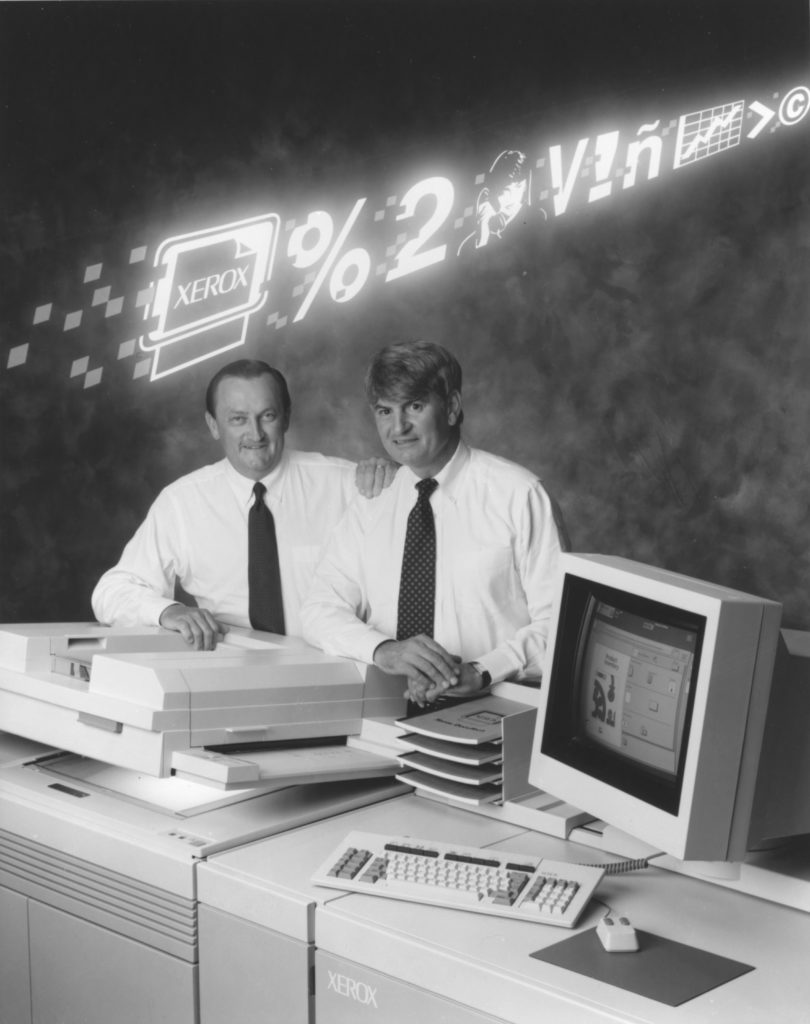
For the first time ever, three distinct technologies – high-
resolution scanning, laser imaging, and xerography – were combined into a single publishing solution, delivering offset-like quality at a lower cost and in an unprecedented turnaround time.
“Within a decade of its introduction, most of the black-and-white printing work in the United States had shifted to DocuTech, profoundly changing the nature of the printing industry and moving it into the digital age,” said then Chair of the Rochester Institute of Technology’s School of Print Media, Frank J. Romano in 2003.
On its landmark 25th anniversary, we look at the origins and significance of the original Xerox DocuTech, which won over legions of loyal followers who built hugely successful print businesses with its help.
A Foundation Far Ahead of its Time
Critical to this technological breakthrough were several innovations the company had invented decades prior but failed to capitalize on, instead watching as others successfully brought them to market. 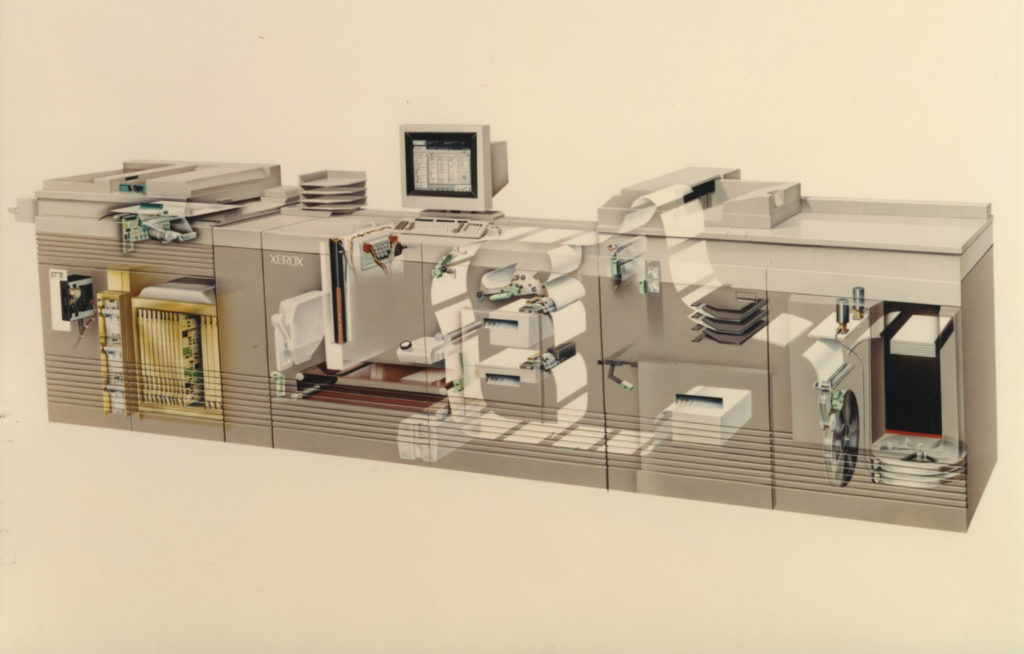
Among them were the personal computer, the user-friendly graphical software to run it, Ethernet and the computer control device known today as the mouse; all of which were created by Xerox’s world renowned Palo Alto Research Center (today known as PARC, a Xerox company). Indeed, the DocuTech’s mouse, GUI and internal Ethernet communications system were direct descendants of these PARC originals.
The several thousand engineers on the DocuTech development team also worked on state-of-the-art networked Xerox Alto and Star computers. These technologically advanced systems provided the engineers with a highly capable development environment in the 1980s, an efficiency that was unmatched at the time.
“While it’s true we produced the first personal computer but failed to market it successfully, those efforts did prove pivotal in equipping the DocuTech team with the tools and hardware to build a superior product,” said Randall Hube, manager of Litigation & Strategic Technical Services in Xerox Intellectual Property Operations, and also a member of the DocuTech development team from its earliest days.
Those innovations also included copying engines developed in Webster, New York, capable of printing at then-benchmark speeds as fast as 135 ppm, as well as advanced electronics from West Coast engineers that enabled the fast processing required for high-speed production of 600 dpi images – twice the standard resolution of the time. A team in Webster drew from this rich trove of cutting-edge technologies to develop the DocuTech’s groundbreaking architecture.
“One of the biggest challenges the team faced was how to make a machine that performed seamlessly in a space that was not yet defined,” recalls Hube. “We always had a sense, even from the beginning, that what we were doing was groundbreaking work and it was going to be very special.”
The Print-Shop-in-a-Box that Transformed the Industry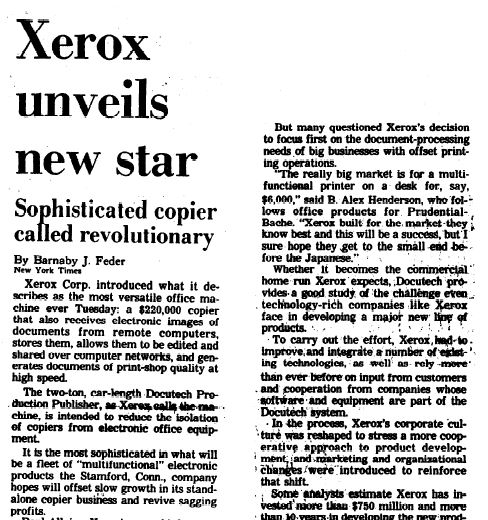
Upon its launch, the original DocuTech had an immediate impact on the printing market.
“This [technology] neatly fills a gap between convenience copying, offset printing and high-volume electronic printing,” said David Goodstein, printing industry analyst, at the time of its launch. The DocuTech was seen to be ideal for jobs that had to be produced “more quickly than they could be done in offset, where they need better quality than you could get on electronic printers, and the run lengths are long enough so that doing it on a walk-up photocopying device is too expensive.”
It was the first machine that enabled onboard creation of signature pages—a sheet with multiple images that when folded becomes a section of a book—the first that could run multiple functions concurrently, enabled creation of job tickets and much more.
The end result was what Hube called a “print shop in a box.” And for commercial print providers and in-plant printing operations, the opportunity to produce offset-quality copies 25 percent cheaper than offset printing presses – and in one-fifth the time – was unmistakable.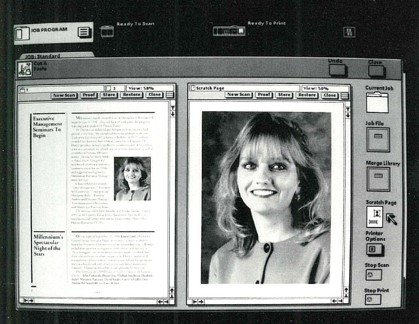
Longer term, the DocuTech’s significance was its architecture, which formed the foundation for a series of models that would create an entirely new business of printing.
Essentially, the work process of printing documents was flipped on its head and fundamentally changed forever. Up until that point, it was universal practice to “print, then distribute”, a model made commonplace by traditional offset print. But by combining the steps of the printing process (prepress, printing, finishing) into new electronic workflows, older workflows and distribution models were traded in for digital printing’s new “distribute, then print” capabilities.
“In today’s high-tech environment, it’s hard to imagine a day when there was no viable means for a commercial printer to print directly from a computer to a high-speed production printer,” says Sam Hirji, President of Samco Printers, an early DocuTech adopter based in Vancouver, Canada. “The DocuTech forever changed that.”

DocuTech’s Impact Validated, Honored Among Elite Company
In 2003, thirteen-years after its launch, Xerox was recognized by the Institute of Electrical and Electronics Engineers (IEEE) with the prestigious IEEE Corporate Innovation Recognition award for its development of the DocuTech, putting it alongside an exclusive group of leading companies and transformative technologies. Past recipients include: Intel for its development of the microprocessor, AT&T for its contributions in cellular mobile telecommunications, and Bellcore for its leadership in broadband fiber optic telecommunications systems, among many others.
The IEEE credited the DocuTech for creating, at the time of its award, the $30 billion print-on-demand (POD) industry and citing it as being “as revolutionary for the printing and publishing industry as the original Xerox copier was for the office.”
A Legacy that Lives On
While the DocuTech name was retired in favor of “Nuvera” beginning in 2005, and production of new units ceased in 2013, the mission that DocuTech set its sights on twenty-five years ago can be considered a success: To revolutionize the way documents were produced.
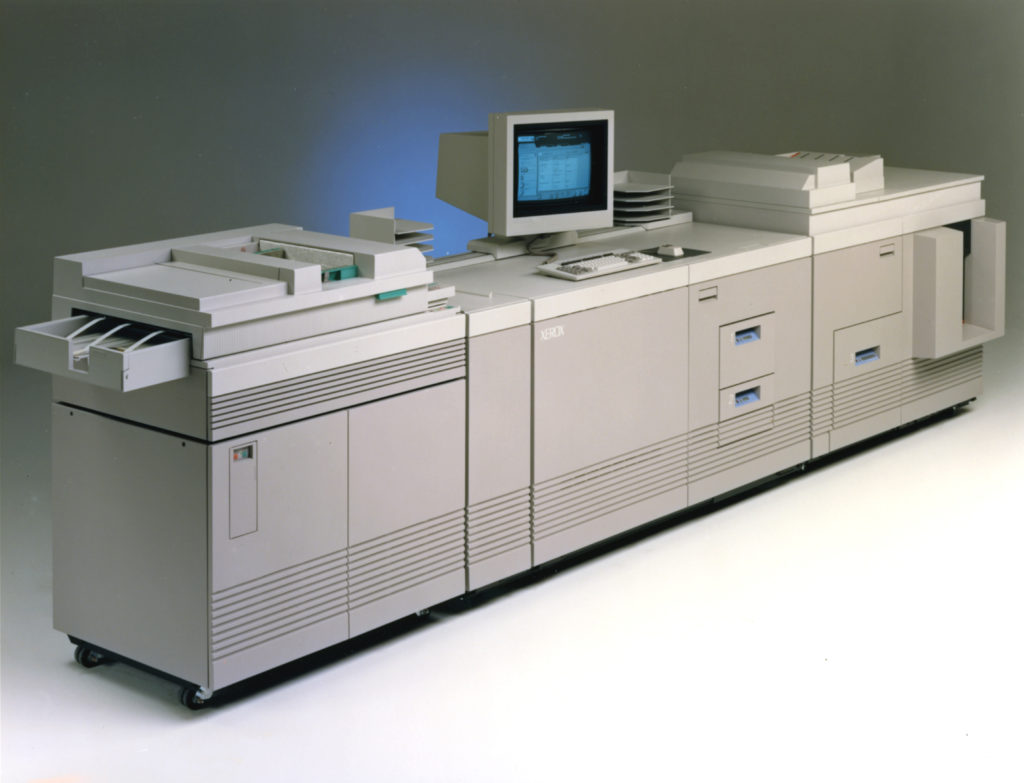
Today the legacy of DocuTech continues, both directly and indirectly, as more than 1,500 DocuTech systems are still active worldwide, while a countless number of businesses and individuals have benefited from the print-on-demand movement it created.
“The Xerox DocuTech 135 has been a tremendous asset to Samco Printers over the last 25 years,” said Hirji. “Still to this day, it figures largely into our production cycle, reliably churning out black and white documents at the same speeds it did a quarter century ago.”
Whether you are a current or former DocuTech user, watched it from a distance, or once-upon-a-time worked on its development – we encourage you to share your stories, experiences and thoughts!

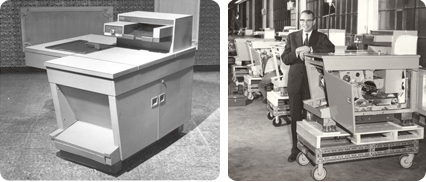

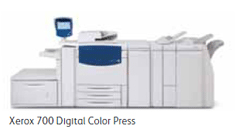
Comments are closed.